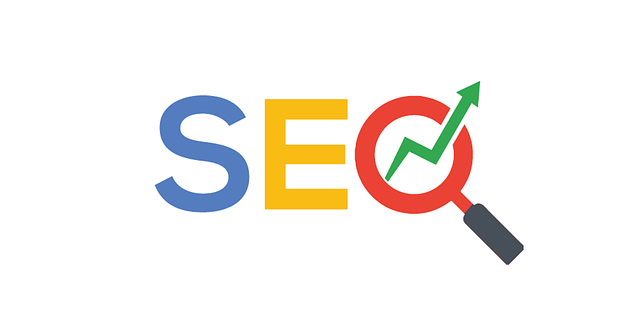Technical SEO heavily relies on URL structure, which directly impacts search engine optimization and website performance. Optimizing URLs to be concise, descriptive, and keyword-rich enhances crawlability, indexing, and rankings, driving organic traffic. Best practices include keeping URLs short, using hyphens for separation, avoiding complex parameters, and ensuring they're under 100 characters. This user-friendly structure improves navigation, reduces bounce rates, increases engagement, and boosts website performance over time. By incorporating relevant keywords and maintaining a clean structure, search engines can accurately index pages, improving SEO potential and providing users with easier access to content. Regularly analyzing KPIs like CTRs, bounce rates, and time on page helps measure the success of URL optimization efforts.
In the digital landscape, a website’s URL structure is more than just a web address—it’s a critical component of Technical SEO. A well-structured URL enhances user experience, improves crawlability for search engines, and ultimately boosts online visibility. This article delves into the intricacies of URL Structure Optimization, covering best practices, keyword integration, common mistakes to avoid, and measuring success. By understanding and implementing these strategies, you can enhance your website’s performance in search results, driving more organic traffic.
Understanding URL Structure and Its Impact on Technical SEO

URL structure is a fundamental aspect of website architecture that directly influences search engine optimization (SEO). It refers to the organization and format of URLs, which play a crucial role in how search engines crawl and index web pages. A well-structured URL provides clear information about a page’s content, making it easier for search engine algorithms to understand and rank the site effectively.
In the realm of Technical SEO, optimizing URL structure can significantly impact a website’s visibility and performance. Search engines use URLs as a primary signal to determine the relevance and context of web pages. By implementing best practices, such as keeping URLs short, descriptive, and keyword-rich, websites can enhance their crawlability and improve the overall user experience. This, in turn, leads to better indexing, higher rankings, and increased organic traffic.
Best Practices for Creating User-Friendly URLs

Creating user-friendly URLs is a crucial aspect of Technical SEO. These URLs not only improve the overall user experience but also help search engines understand and index your content more effectively. Best practices include keeping URLs short, descriptive, and keyword-rich. Avoid using complex parameters and dynamic segments that can confuse users or make your pages seem cluttered. Instead, use hyphens to separate words and prioritize clarity over complexity.
Additionally, ensuring your URLs are consistent in structure helps both users and search engines navigate your site more efficiently. A well-designed URL structure makes it easier for visitors to find relevant content quickly, reducing bounce rates and increasing engagement. From a Technical SEO perspective, this translates into better rankings and improved website performance over time.
Optimizing URLs for Search Engines: Tips and Techniques

Optimizing URLs for search engines is a crucial aspect of Technical SEO, as it directly impacts how well your website ranks in organic search results. When crafting URLs, keep them concise, descriptive, and keyword-rich. This means including relevant keywords that accurately reflect the content of the page while keeping the structure clean and easy to read. For example, instead of `www.example.com/page123`, use `www.example.com/niche-keyword-here`.
Remember, search engines like Google use URLs as one of the many signals to understand your website’s content. Well-optimized URLs not only help search engines index your site more effectively but also enhance user experience by providing clear indications of what each page is about. Use hyphens to separate words and avoid special characters or numbers that don’t add semantic value. Additionally, ensure URL length stays within reasonable limits—ideally under 100 characters—to maintain both technical and user-friendliness.
The Role of Keywords in URL Structure Optimization

URL structure plays a crucial role in Technical SEO, and incorporating relevant keywords is an essential strategy to enhance search engine visibility. When crafting URLs, keywords provide context for both search engines and users, helping them understand the content and purpose of each webpage. Well-optimized URLs act as a map, guiding users and bots alike to specific resources on a site.
By strategically placing keywords within URL structures, websites can improve their relevance scores with search engines. This practice ensures that web pages are not only internally linked effectively but also communicate their content clearly to external audiences. For instance, including target keywords in URLs makes it easier for search algorithms to index and rank pages accurately, thereby increasing the site’s overall search engine optimization (SEO) potential.
Common URL Structure Mistakes to Avoid

Many websites fall into the trap of having clunky, confusing URLs that do more harm than good to their Technical SEO efforts. Some common mistakes include overly long URLs, using random numbers or parameters without context, and creating dynamic URLs that are difficult for both users and search engines to decipher. These can lead to poor click-through rates, high bounce rates, and signals to search engines that the site is low quality or irrelevant.
Furthermore, avoid unique, keyword-rich URLs for every page as this can create a messy structure and make navigation challenging. Instead, opt for clean, descriptive URLs that include relevant keywords naturally. Strive for simplicity, with each URL segment representing a level of hierarchy in your site’s structure. This not only enhances user experience but also helps search engines understand your content architecture more effectively.
Measuring the Success of Your URL Optimization Efforts

Measuring the success of your URL optimization efforts is a crucial step in assessing the impact and effectiveness of your Technical SEO strategies. By implementing structured URLs, you aim to enhance user experience, improve crawlability for search engines, and potentially boost rankings. To gauge success, monitor key performance indicators (KPIs) such as click-through rates (CTRs), bounce rates, and time on page. Higher CTRs indicate that optimized URLs are attracting clicks from both users and search engine results pages (SERPs). Lower bounce rates suggest that visitors are finding relevant content, leading to longer engagement times.
Regularly analyze these metrics using web analytics tools like Google Analytics. Track changes over time as you continue to refine your URL structure. This data will help identify patterns, such as which optimizations drive the most traffic or where users are dropping off. By understanding these insights, you can make informed adjustments and further enhance your website’s performance in both user experience and search engine visibility.
